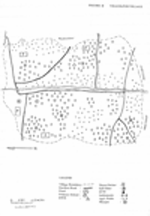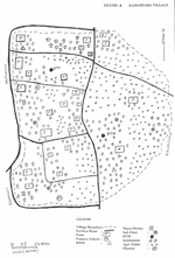The use of alternative safe water options
to mitigate the arsenic problem in Bangladesh: a community perspective
Md. Jakariya. M.Sc. Thesis,
Department of Geography, University of Cambridge, Aug 2000
CHAPTER 6. MATERIALS AND METHODS
6.1 Study area
This study was conducted in areas where BRAC has been working
to mitigate the arsenic problem for more than a year. BRAC distributed different
safe water options among the community as free demonstration units. These free options were located and
distributed among people selected by the community itself. A limited number of
options were distributed in each village, the intention being to motivate and
raise the awareness of the villagers about the provided options. Since the
number of provided options in any one village was very low, perceptions of
villagers about these options were collected from different parts of the
respective upazilas. The villages were selected purposely to meet the
criteria of the research project and to get a better accessibility for carrying
out project activities because of time and resource constraints.
Focus group discussion and household survey methods were used
to generate ideas and identify the factors responsible for the people accepting
or rejecting the provided safe water options as well as the community’s
perception of the provided options.
6.2 General characteristics of the study areas
It has been observed during reconnaissance visits that the
two study villages (see Figure 5 and Figure 6 for study villages) have some
distinct characteristics. These differences are presented in the following
table:
Table 2: General difference between the
study villages
|
Vhagolpur (V) Village: Sonargaon
|
Kamarpara (K) Village: Jhikargacha
|
|
1. This upazilla is very close to the capital of Bangladesh (20
km).
|
1. This upazilla is very far away from the capital city (1000
km).
|
|
2. Average economic condition of this people of the village is
relatively rich
|
2. Average economic condition of the people of the village is
relatively poor.
|
|
3. Culture of the people is almost town oriented.
|
3. Culture of the people is mostly village oriented.
|
|
4. Profession of people is mostly business-oriented.
|
4. Profession of people is mostly agriculture-oriented.
|
|
5. Households are mostly individual- and family-oriented.
|
5. Households are mostly collective- and community-oriented.
|
|
6. Acceptance of any new technology or idea is very difficult; i.e.
community people are not very responsive to the motivation from outside
the village mainly because of their exposure to the outside world.
|
6. Acceptance of any new technology or idea is less difficult; i.e.
people are more open-minded.
|
|
7. Literacy rate is comparatively high in this village.
|
7. Literacy rate is comparatively low in this village.
|
Source: Field Observation
6.3 Sampling techniques
BRAC is conducting a community-based arsenic mitigation
project in two upazilas, Sonargaon & Jhikargacha. Because of time
constraints two villages were selected from BRAC-operated areas specifically to meet the objectives of the
research project. Vhagolpur village in Sonargaon upazilla and Kamarpara
village in Jhikargacha upazilla were selected for household survey type
analysis. In Vhagolpur the number of households was small (51) and therefore in
this village a 100% household survey was conducted, whereas in Kamarpara, one in
every three households was selected for the household survey in order to keep
the household number in the two upazilas consistent. Two field
researchers were trained in each upazilla to conduct the household survey
and carry out the focus group discussions. Several focus group discussions were
held in each location with different categories of people. Different categories
of people were selected for the
focus group discussion.
Figure 5: Vhagolpur Village |Click on the Figure for a
larger view|

Figure 6: Kamarpara Village |Click
on the Figure for a larger view|

The main techniques used for data collection were the
household survey and focus group discussion. A detailed questionnaire was
administered in the selected households in order to understand people’s
perceptions of the provided options as well as other data in order to fulfill the
objectives of the project.
A separate semi-structured questionnaire was prepared
specifically for the focus group discussions and administered to different
categories of people in the project villages in order to get ideas about
communities and their perceptions of alternative safe water options and the
arsenic problem.
6.5 Data processing and analysis
The data sheets were rigorously edited and checked for
completeness and consistency. Afterwards, the data were entered into a database
using FoxPro software. Later, data were analyzed using SAS (Statistical Analysis
Software). Univariate and bivariate tables were used for data presentation and
interpretations.
6.6 Limitations
Any study involving interviews and visual observations is
prone to bias, which may or may not affect the findings of the study. An effort
to avoid this was made by employing independent research assistants in order to
ensure an unbiased outlook when collecting data and also conducting the focus
group exercises.
In addition, the use of tube well water in Bangladesh has
become very popular among rural people, owing to a cumulative effort and
continuous campaign of 25 - 30 years in that direction both from government and
NGOs. Because the practice is so deep-rooted, it is therefore very difficult to
change the people’s habit of using arsenic-contaminated sources to using
arsenic-free sources. Therefore it was very difficult in some places to obtain
villagers’ positive feedback to alternative safe water options. Due to time
constraints and the monsoon season it was not possible to obtain a larger sample
size than the present one.
|